1/48 Tamiya FW-190 A8, “Otto Kittel” 2. JG 54, Black 1, Werk Number 690 282
This article is part of a series:
- Kasserine Pass GB: 1/48 scale Tamiya FW-190A , Oblt. E. Rudorffer, CO 6 / JG2 Tunisia
- 1/48 Tamiya FW-190 A8, “Otto Kittel” 2. JG 54, Black 1, Werk Number 690 282
- 1/48 Tamiya FW-190 A4, as Flown by Leutnant Eberhard Von Burath, Adjutant 1 Gruppe / JG 1
- Tamiya 1/48 FW-190 A3, Werk Number 223, Hans “Assi” Hahn, Gruppenkommandeur III / JG 2
Here's a model that I completed several months ago, during the Kasserine Pass Group Build, when I built a series of four different FW-190's. This model is painted as a "What if", since I didn't find any photos of the actual plane he flew on his last mission. JG 54 is well known for their use of "unofficial colors". The model is built box stock, with no aftermarket additions. The base kit was the Tamiya F8 ground attack version that I slightly modified to represent an A-8 version of sorts.
This model represents the plane that Otto Kittel made his last flight in, when he was shot down in flames by the rear gunner of an IL-2 "Shturmovik" on the 14th of February 1945. Some sources state the date was on the 16th instead... It might have even been a Shturmovik pilot who shot down Kittel... More on that later.
In case you're wondering just who Otto Kittel was, he was the highest scoring "Experten" in the Focke Wulf 190, scoring over 200 victories of his 267 total while flying the type. If I'm not mistaken, all of his claims were made on the Eastern Front. He was the Worlds 4th highest scoring Ace in aviation history. Despite this, not much has been written about the man and not too many photos exist of his aircraft.
Otto Kittel was born on 21 February 1917 in Kronsdorf near Krnov in Sudeten Silesia, Austria-Hungary.
Kittel joined the Luftwaffe in 1939, when he was 22 years old. Prior to this he was an automotive mechanic. Flying the Bf-109 "Emil", he started his combat flying career in the Balkans. Here he flew numerous ground support missions in the Bf-109, while acting as a wingman for the Staffel Leader. However no aerial victories were claimed by the Future "Experten" while flying in this location.
He didn't start scoring until JG 54 was transferred to the Eastern Front with the opening of "Operation Barbarossa". I found this photo of the Ace, sitting on the edge of the cockpit of his winter camouflaged FW-190. You can see the "Grunherz" emblem by his feet. The use of Unit emblems was later "discouraged" by the German High Command, but occasionally you can still find photos of it's use, where the "Green Heart" was simply sprayed on subtly and used as part of the camouflage !
On the opening day of Barbarossa, June 22nd, 1941, Kittel scored two victories while flying the newer Bf-109 "Freiderich". His first kill was a Soviet Yak-1, and he also claimed a bomber. (Some sources state his first two victories were Tupulev SB-2 Bombers.)
His 3rd victory was scored only 8 days later, on June 30th, 1941, when the future Ace claimed an IL-2 "Shturmovik". For this feat he was later awarded the Iron Cross second class.
By now, his unit had moved to an area just South of Leningrad. JG 54 would remain in this location for almost two years in support of Army Group North !
In early 1943, JG 54 was temporarily withdrawn to convert to the newer FW-190. By mid March of 1943 Kittel had scored 46 victories which included all types of aircraft. The Fw-190 swap was especially appreciated by Otto Kittel, as the type was easier to land, easier to service, and could take more punishment than the 109, since it had an air cooled engine before the "Dora" came into service.
On the 14th (or 15th) of March, 1943, Kittel suffered an engine failure and force landed behind Soviet lines. His plane slid on the snow covered ground for almost 500 feet.
He managed to evade capture, having only a chocolate bar with him for food ! He had left the 190 in a hurry to avoid capture, leaving the emergency rations with the plane. Kittel travelled mainly by night to avoid detection. He ran across several abandoned homes and searched them for food. He found some clothing, but no food.
Hungry and desperate for something to eat, and now that he was wearing the clothes he took from the abandoned homes, he walked through several Soviet check points. Kittel could speak Czech, and some Russian, so he passed himself off as a peasant ! The Soviets even gave him some food ...
Three days later he approached the edge of Lake Ilmen, which was frozen over. That night he crossed the frozen lake, and was discovered by a German sentry, where he was "recaptured"... and returned to his unit. Otto Kittel had managed to survive the cold winter, and evaded capture for 3 days. He was approximately 40 KM behind enemy lines.
During the Battle of Kursk, Kittel flew escort missions for Junkers Ju-87 Stukas, for the unit that was commanded by Hans Ulrich Rudel, III StG 2.
On the 14th of September, 1943, Kittel would claim his 100th victory, which was listed as a Yak-9. To show just how many aircraft the Soviets were losing, he was the 53rd Luftwaffe pilot to reach the "Century" mark ! For this feat he received the Knights Cross of the Iron Cross.
Between November 1943 and January 1944, Kittel served as the Chief instructor at Training Group East, teaching new fighter pilots from his combat experiences. He didn't like this new position, and repeatedly wrote requests to be returned to the "Ost Front". He was eventually granted permission, and returned to JG 54 in March of 1944.
By early April of 1944, he scored his 150th aerial victory, and was awarded the Oak Leaves to his Iron Cross.
He was summoned to the "Wolf's Lair" in East Prussia to be presented the award by Hitler on May 5th, 1944. Kittel returned back to his unit and continued to add to his list of victories.
By now "Otto" was flying a FW-190 A-6, that some say was marked as "Yellow 5". His score had increased to 254 victories by mid October 1944. He scored 106 of these kills in only 6 months...
By the end of November, 1944, his score had risen to 264 victories. Again he was summoned by Hitler to the "Wolf's Lair" in East Prussia. Here he was presented with "Oak Leaves and Swords" for his Iron Cross.
After the ceremony, Kittle flew home to visit his wife and to take a break on leave in Germany...
He returned to JG 54 in January of 1945. Upon his return, he assumed command of 2. JG 54 and started flying this plane marked as "Black 1". It was a FW-190 A-8, Werk Number 690 282.
He scored two more times bringing his total up to 266.
A little after 12 Noon, on the 14th of February (or the 16th at 12:06 PM as stated in a German document I found online). I don't read too much German, so if any of you can translate this I would appreciate it. 🙂
* UPDATE **** UPDATE ****
With the help of my good friend Ferry Dierckxsens, we now know what was written in the German document: He was so kind as to post up a translation so that we all could understand this a little better.
**** UPDATE * UPDATE ** UPDATE *****
Prior to having this document translated, this is how the crash of Kittel's plane was described below at a few other online websites. Personally, I would rather believe the document...
Many thanks again to my good friend Ferry, for sharing this translation with us.
He took off with his unit flying in this machine. They were going to intercept a group of 14 "Shturmovik" planes that were attacking German Forces. Contact was made with the Soviet planes at 12:13 Hours. The Soviet planes were flying at a very low altitude between 100-150 Meters.
Otto Kittel opened fire on a "Shturmovik", shooting it down. This was his last confirmed victory, giving him a total of 267. Kittel had damaged another "Shturmovik" and was lining it up for another attack, when his FW-190 was hit by return fire from the rear seat gunner of the damaged plane.
Then, as it was reported later (by his wingman) that he noticed a small fire inside the cockpit of Kittel's plane.
The plane slowly turned downwards and struck the ground, killing the Worlds 4th all time leading Ace. The plane caught fire and burned upon impact.
Otto Kittel's remains were later found and buried nearby. After the War was over, his remains were supposedly repatriated. Just recently, about two years ago it was reported that the crash site where "690 282" struck the ground was re discovered... but I have found no further information online about this.
The site of the crash is believed to have been Six Kilometres (3.7 miles) south-west of Džūkste in Latvia.
This is the translation provided by Ferry:
Date: 16 Feb 1945 Oberleutnant Otto Kittel Born 21 feb 1917 in Kronsdorf, near Jägerndorf/Sudetengau.
Staffelkapitän of the 2nd Staffel – 1st Group JG 54.
Planquadrat 37-197 = map grid
Circa 6 kilometers south-west from Dzukste
Enemy aircraft.
Fw. 190 A-8
Werksnr. Could translate into BuNo. 690 282
Kennung = could translate into “marking” black 1
Totalverlust = Total loss is confirmed with 100%
Flight order: free hunting. In air combat shot down by Russian fighters. Grave location unknown.
Place of impact directly in the main battle Lines.
Course of events: statement of section pilot Oberfahnrich Renner.
Take-off from base at 12.06 PM in the unit of Oberleutnant Kittel for free hunting in the battle area of Dzukste.
At 12:13 PM at a height of 150 meters a dogfight started with 14 Il-2 aircraft, which where flying in line formation and attacking German ground targets.
The (German) unit pushed itself in from the near side into the line of Il-2 (literally) “Butcher”.
Flying on the right hand side in a distance of 100 meters from Oberleutnant Kittel, I noticed how a Il-2 attacked from the down rear position, while behind us 2 more IL-2 made a steep climb. A second later a bright flash was visible in his (Kittel's) cockpit and the aircraft went down with a right curve in a flat gliding flight.
The aircraft hit the ground with it's rightwing first and caught fire immediately. It skidded further up to 200 meters from the forest border and burned out completely.
I circled the area for a longer period of time. Exact area as mentioned above. A free para jump is not observed by me.
Signed by Renner, Oberfahnrich. LGPA- Konigsberg = Luftgau Post Amt = Air district post office.
Oberfahnrich is equivalant to Flight Cadet or Acting Pilot Officer
Oberleutnant is equivalant to First Lieutenant or Pilot Officer
Staffelkapitän is equivalent to Squadron leader
This sheds a lot of light onto the final moments of Otto Kittel.
If I am reading this correctly, it could be highly likely that he was shot down by a Pilot flying in another IL-2 "Shturmovik". The "Shturmovik's" were flying in a line formation, and Kittel was attacking from an angle flying through the formation. The plane in line after the one he shot down could have been the one mentioned as attacking Kittel from the "Down Rear" position.
The Soviet pilot may have managed to shoot down the Ace with a well placed deflection shot, similarly to how Admiral Yamamoto was shot down and killed by American P-38's. The Soviet pilot may have pulled in behind Kittel from below.
Two other "Shturmoviks" turned upwards, but apparently didn't fire upon his plane.
This would account for the "Bright Flash" that was visible inside the cockpit just before his plane went down. It is quite possible that his plane took a direct hit in the cockpit from one of the "Shturmovik's" wing guns, which was a 23 MM cannon. These weapons could fire HE (High Explosive) and API (Armor Piercing Incendiary) rounds and this would account for the "Bright Flash" that was mentioned in the report.
It would also explain why Kittel's plane simply flew off after the explosion was witnessed, to the right in a shallow glide until it struck the ground. The Ace was probably dead from the explosion, or incapacitated and could no longer control his plane.
The plane struck the ground with the right wingtip first, then slid to a stop where it burned.
It looks to both Ferry and I, that Otto Kittel met his demise in this fashion.
As I stated before, this is the old Tamiya F-8 kit that I built up as an A-8 version, and was part of this four plane build I did as part of the fantastic Kasserine Pass Group Build, that was the brainchild of David A Thomas. Here's a link to the build if you're interested...
I had a fun time with this one, and have a few more "Wurgers" to post soon... possibly a Tamiya 1/48 scale Me-262 that was built in between these FW-190's.
As usual,
"Comments are encouraged".
Thanks for looking ... 🙂
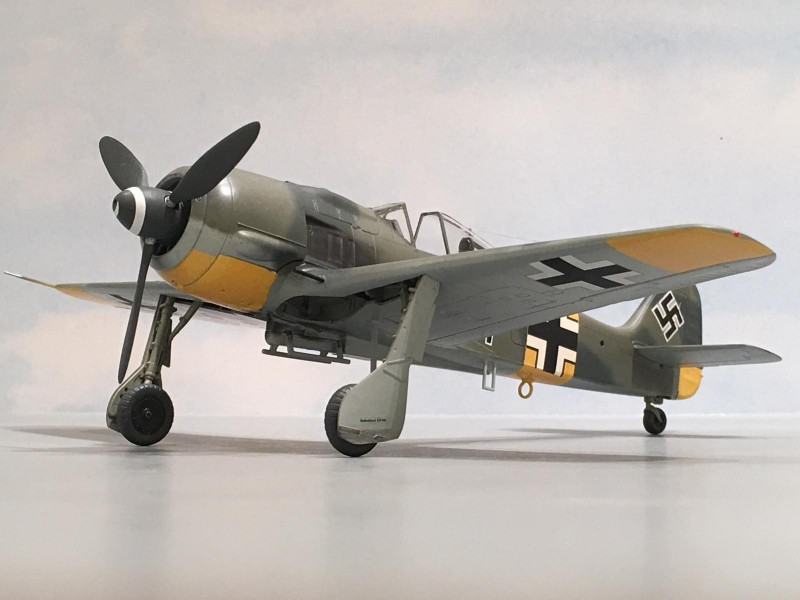


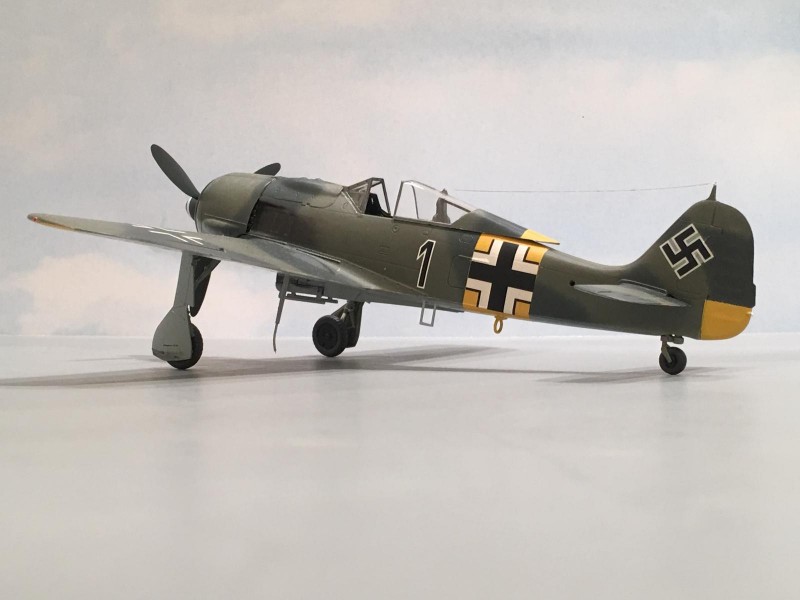

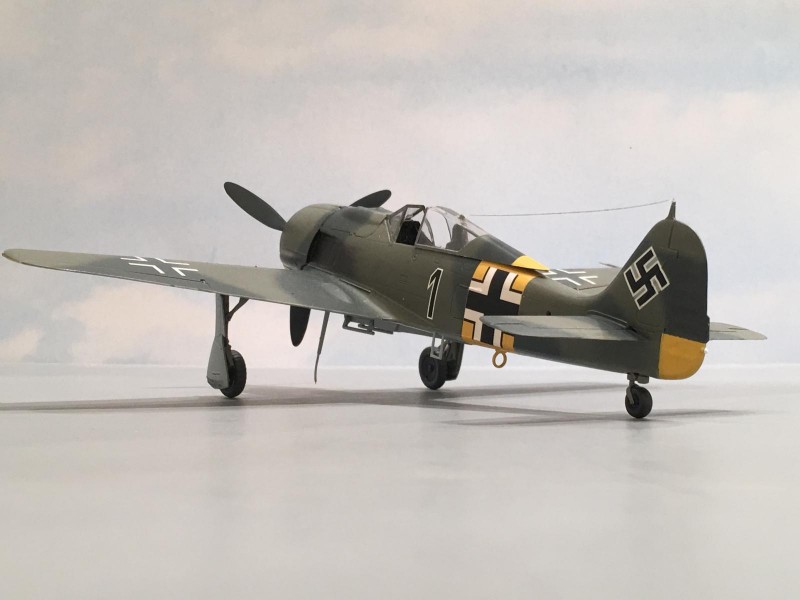
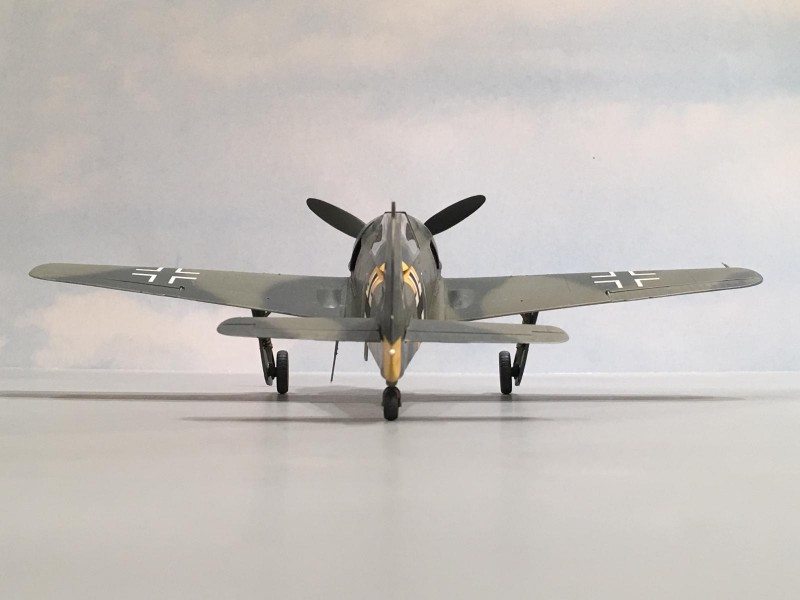
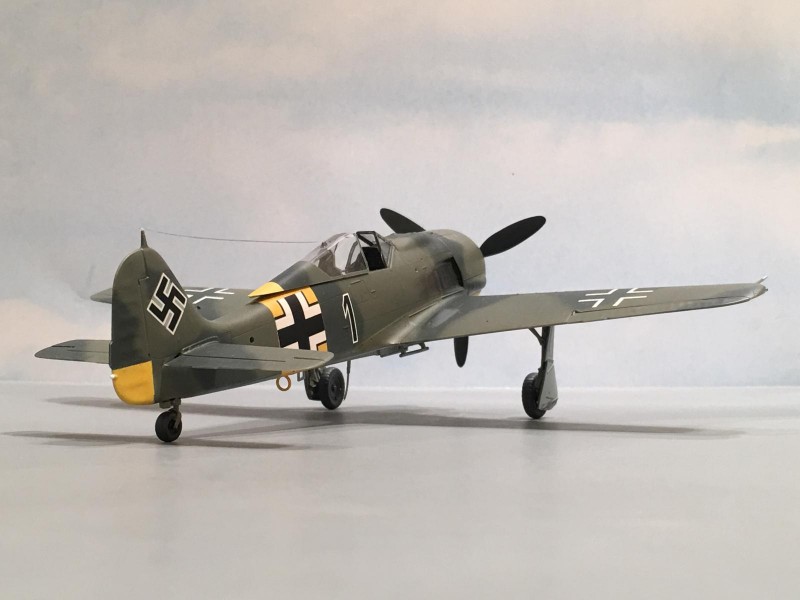
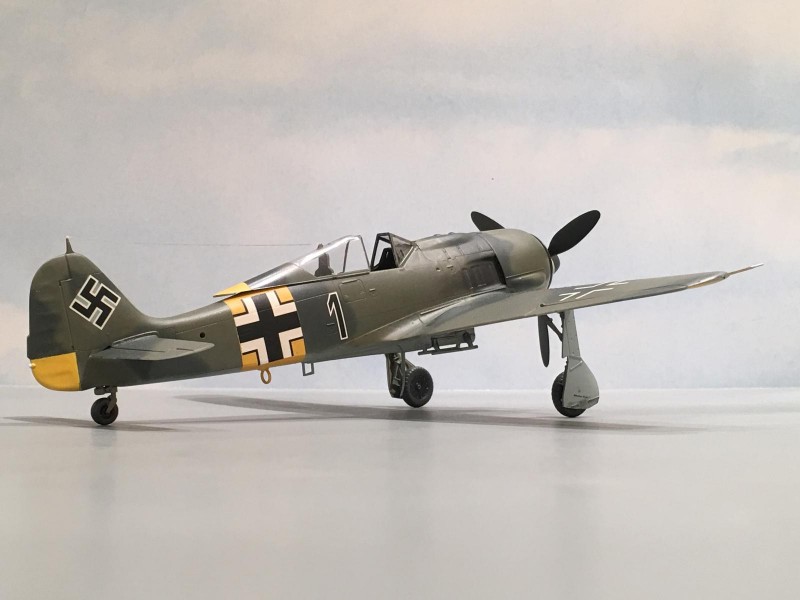
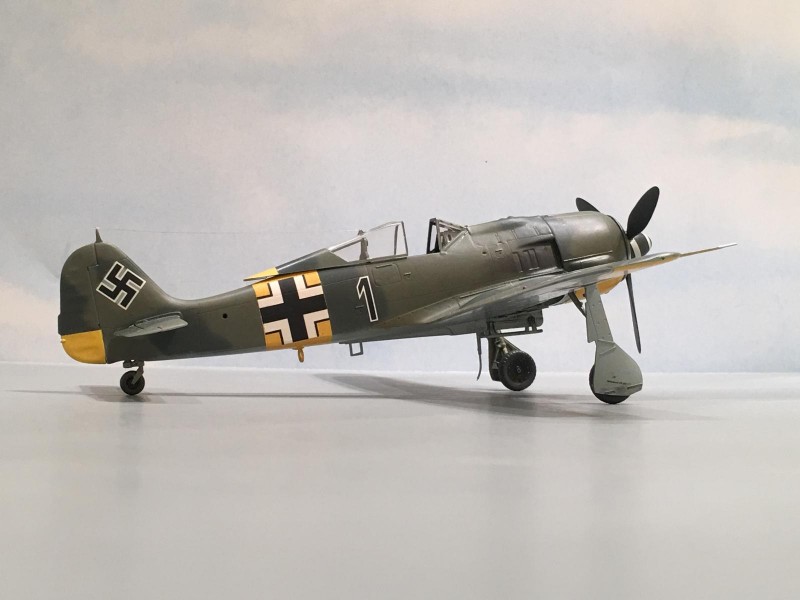
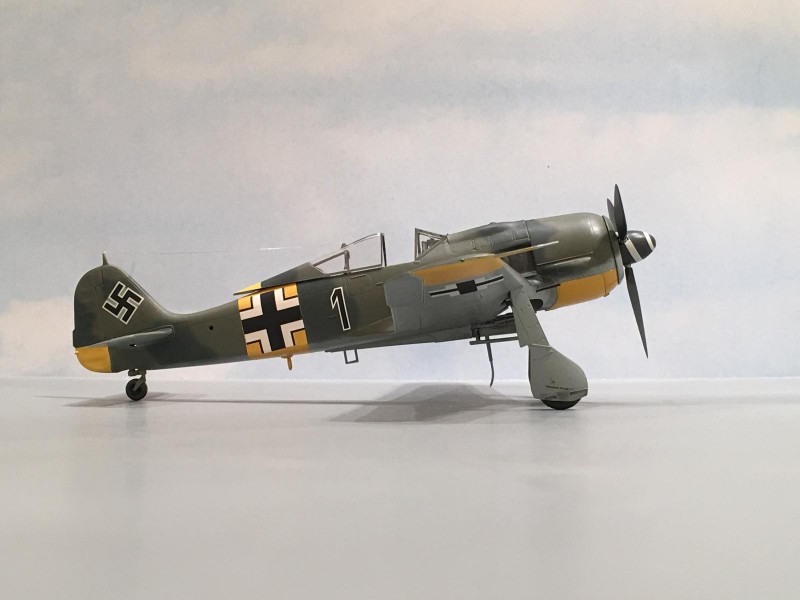
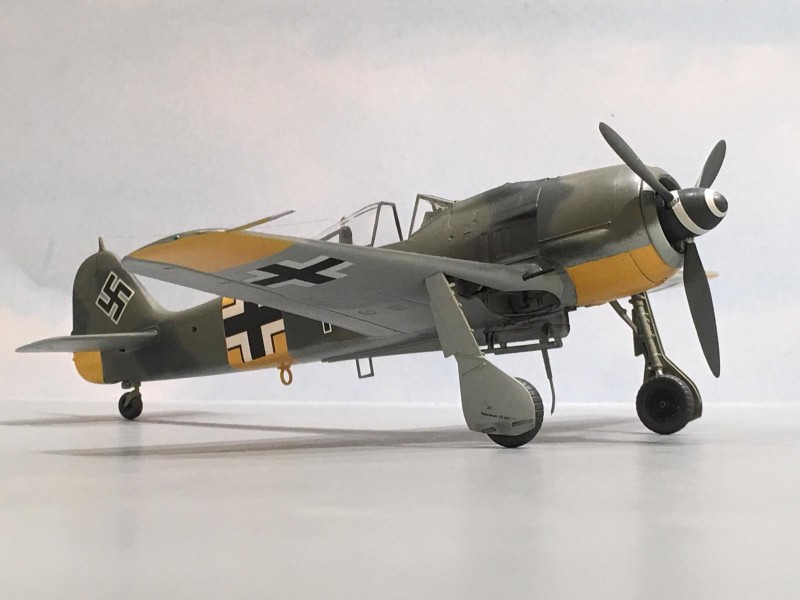
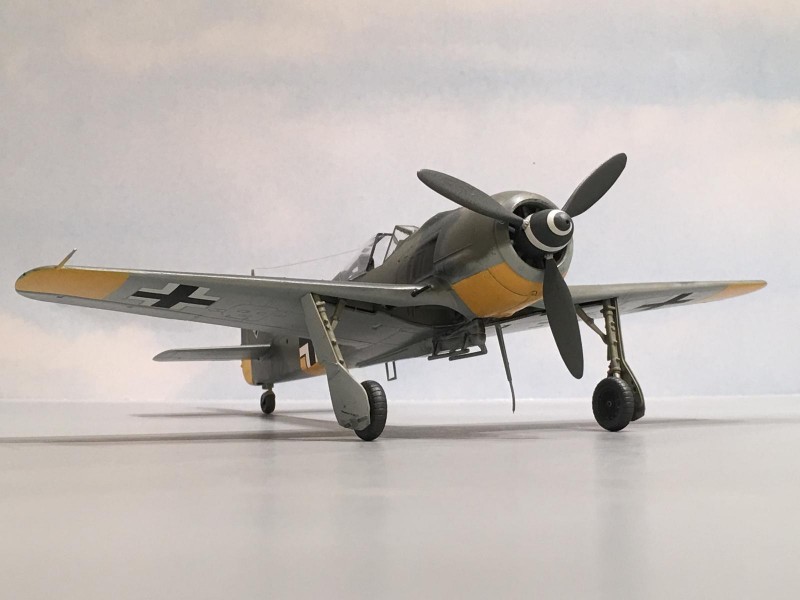
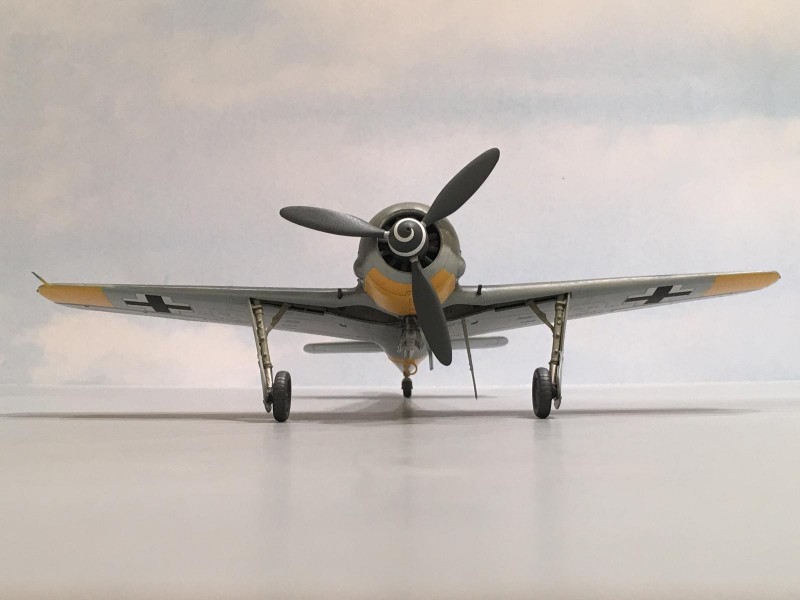
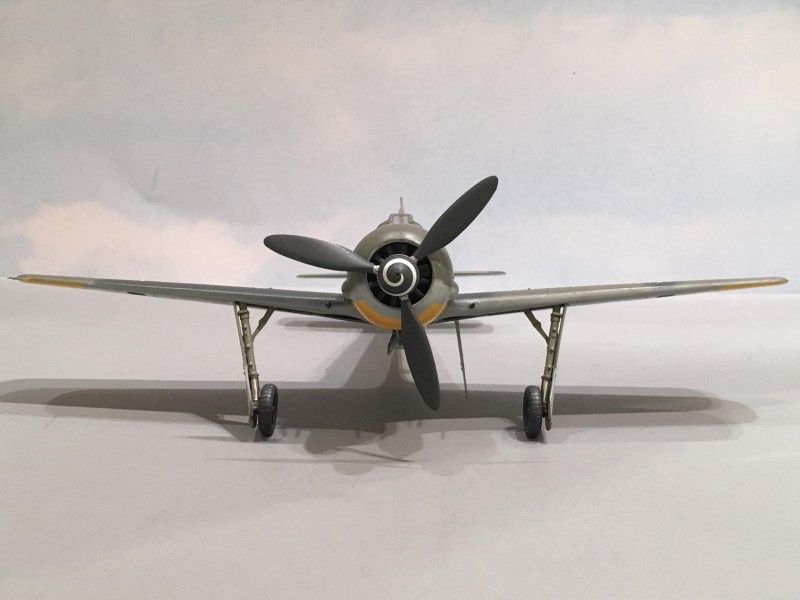
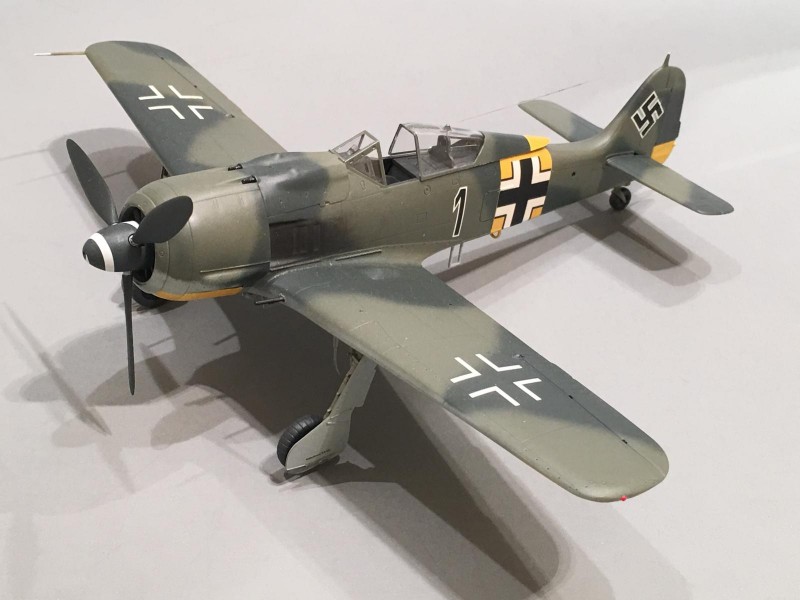

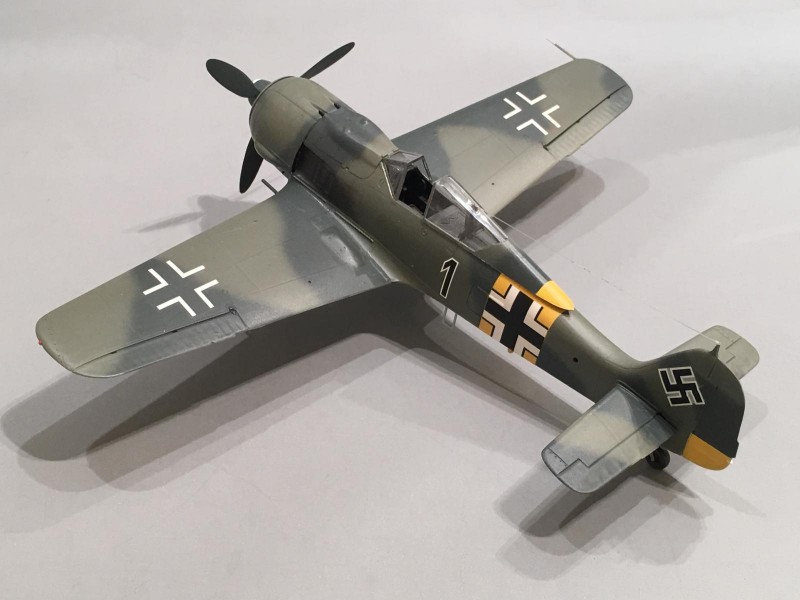

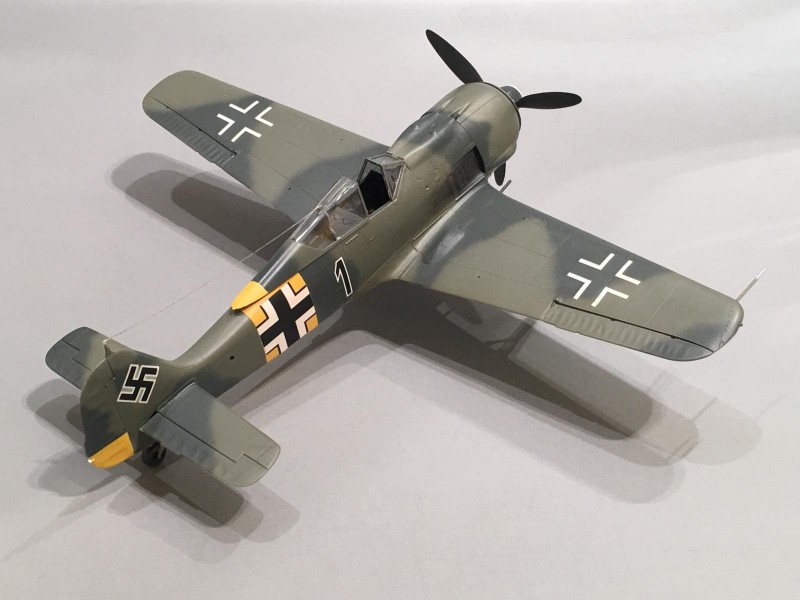
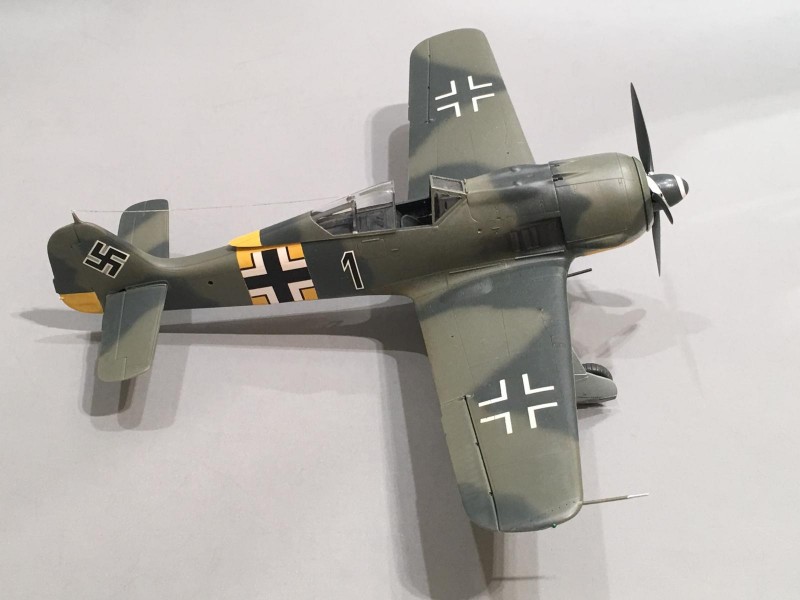
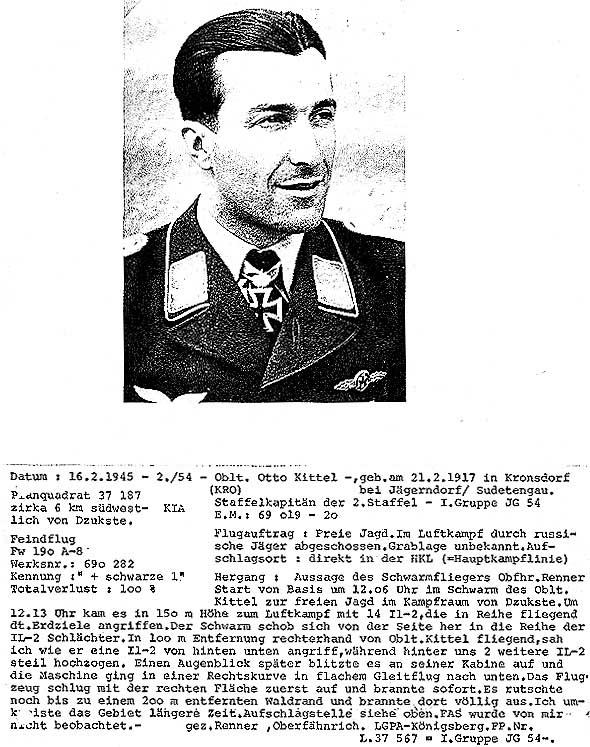
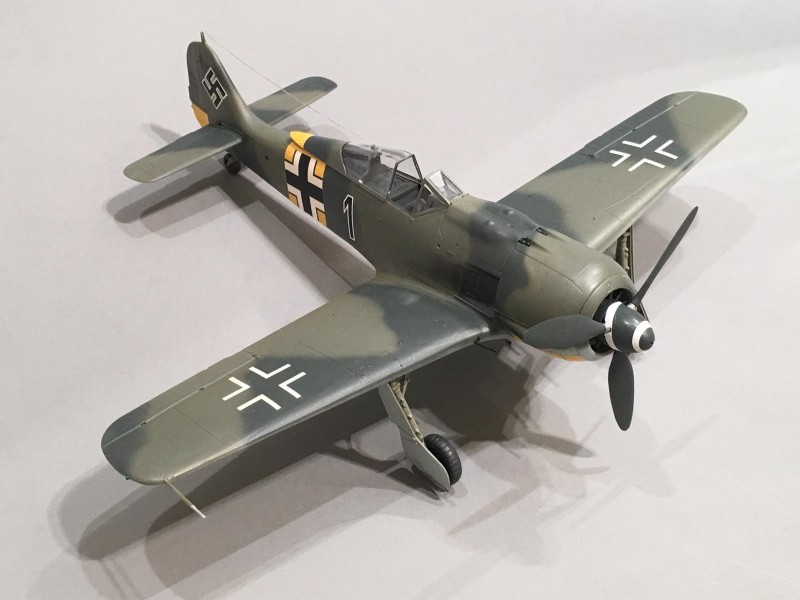
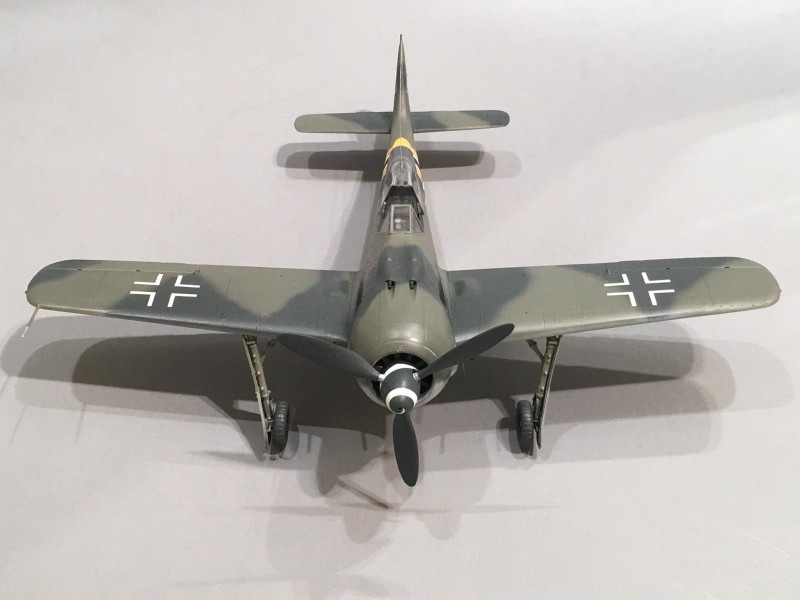
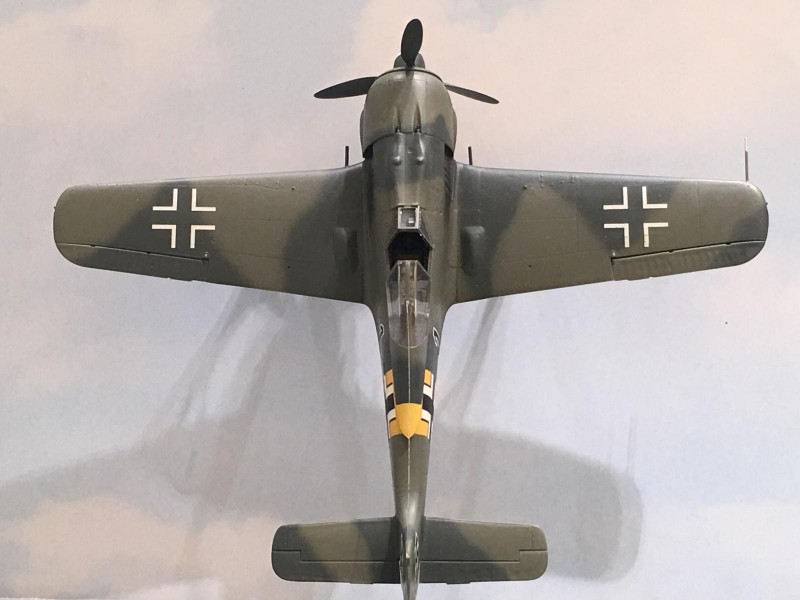
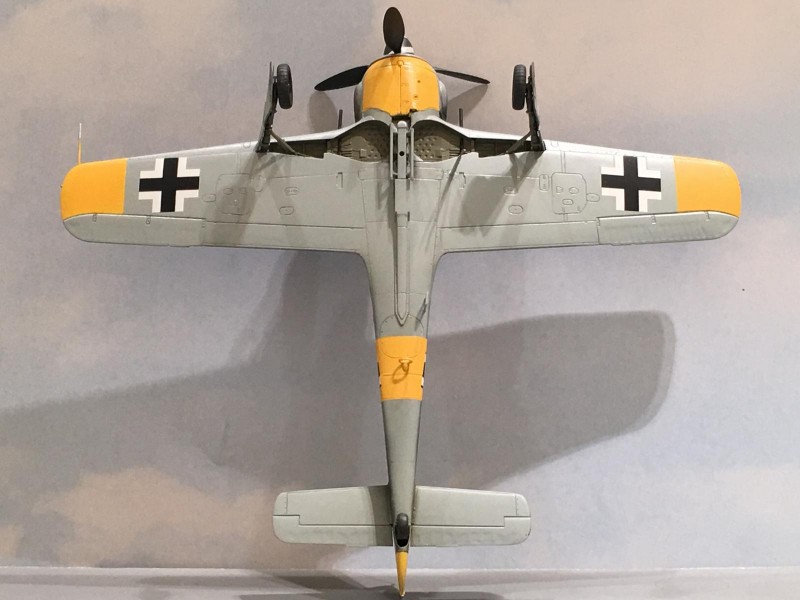
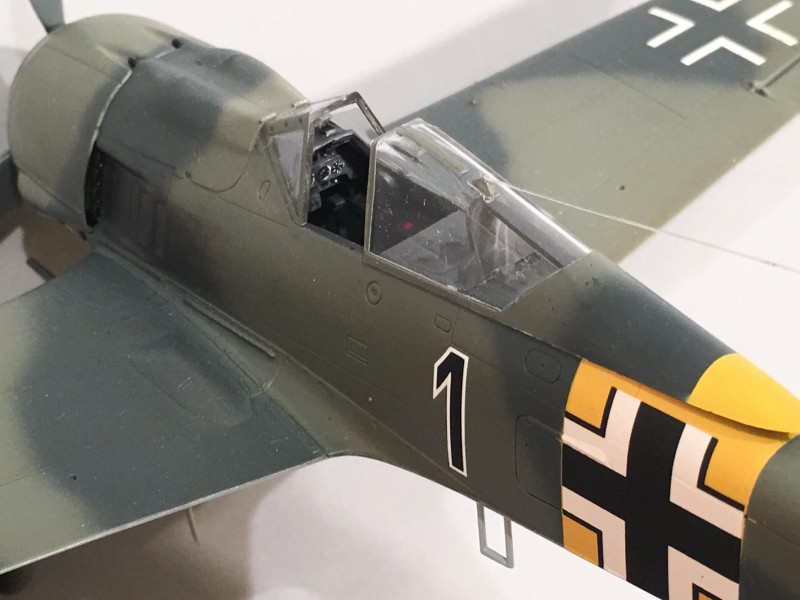

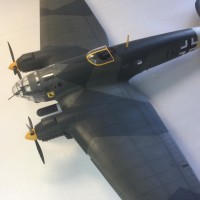

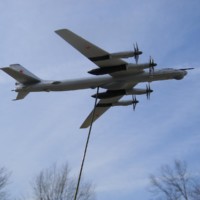
Great build, Louis! Nice piece of info, too. I might have to try my hand on that old monogram 190 that I acquired, maybe a captured bird.
Thanks Robert ! I say go for it and build it up... a captured bird would be ideal. I would really like to see that one ! You just have to love those old Monogram kits ... 🙂
"What-If" or not, it sure looks good to ME - then again, so does ALL your work, buddy.
Thanks Craig ! It was nice visiting with you the other day... 🙂
Thanks again buddy !
Same here...hope you found some use out of my "left-overs".. 🙂
I'm still going through it, and yes there is some good stuff in there... Thanks again !
Very nicely made and painted.
Thank you Peter.
that's a stunner
Thanks Bob ! I really enjoy looking at your builds too. It's hard to pick a favorite out of your postings.
I see the Werks is still producing good looking product buddy. Nice job and some excellent history as well. BTY, our local Tri-State War Bird Museum is restoring an FW-190 to flying condition, it's a composite of actual and re-manufactured parts. Should be fun to see it flying.
2 attached images. Click to enlarge.
Thanks Tom for sharing these photos ! It looks like it's not too far from completion ...and will be wearing JG 1 colors no less !
About 5 years ago, my friends were building up a wing for a FW-190 and a canopy. The rest of the plane was being built elsewhere, (Arizona I think) ? It was recovered in Russia. They started with this:
and did this...
Just recently one of the A&P mechanics travelled out there to help install the engine and get it running. It is always great news to hear that another War bird will be gracing the skies, especially one as rare as the FW-190 !
Do you see any of the original wing? Often these wings serve as patterns for new metal. Some times you think that the FAA requires a builders plate and four rivets ...and then the aircraft becomes an original.
Parts of the original spar looked like they were used when I took this picture. They may have been installed for a mock up or test fit purposes. If you look really hard at the photo you can see the original metal. You're right, on most of the restorations, the majority of metal isn't serviceable, either by damage or corrosion (or both).
Wonderful work Louis, the "190" looks stunning, and a very interesting story as well.
I'm happy to translate the document for you, as my German is quite up to scratch. I'll have a good look at it this evening when I'm back home.
Thank you very much Ferry. I have been very curious to hear what was actually written in this report. I can pick out a few words, but that's about all.
I sincerely appreciate the compliments.
Great looking aircraft Louis. Back stories always add to the article
Thanks George. I sincerely appreciate the compliments, and I'm glad that you enjoyed the read as well.
Well done Louis. Not only on the plane, but the very well presented story! Tip of the hat to you.
Thanks James ! I'm pleased to hear that you enjoyed it...
Gorgeous, of course, but always a pleasure, Louis.
Fantastic narrative. What a fitting irony that he was shot down by a Sturmovik, a lumbering flying "tank" which he had downed nearly countless times before, and (this one) now was already damaged by his gunfire. In the end it didn't matter that he shot down hundreds of them--the Russians built over 36,000 of the planes! Russian peasant women in factories and Lend-Lease overwhelmed the gallantry of German pilots.
Thanks David for the kind words. I thank you for taking the time to host the Kasserine Pass GB, and act as a coach along the way.
If I'm not mistaken, the Sturmovik was the most produced plane during WW2. I'm sure that hate for the German invaders, and the terror inflicted by Stalin on his own people helped to increase these numbers considerably. In an environment like that, one feared making mistakes, and often toiled excessively to prove their devotion to the cause.
Ironically many Russian peasants greeted the Germans as "Liberators" from Stalin in the initial phases of Barbarossa. But that soon changed...
I have seen video clips were T-34 tanks were being driven right out of the factories to the "Front" which was only a few hundred yards away. These tanks were often unpainted in a rush to get something to the Soviet troops to stop the German advance.
In the end, Old man Winter, and hoards of men and material won. Quantity over quality prevailed.
Thanks again for the kind words David... 🙂
Another beauty from the Gardner Iron Works! And a nice bit of lunch-time reading to go along with it.
I'm glad you enjoyed the FW and the reading. I hope it made your lunch a little more enjoyable. Good to hear from you Greg. Right now the "Iron Werks" is knee deep in RAF builds... 🙂
Louis,
I can only echo and parrot what has been written. The Narrative/story compliments the model and really lays the ground work for letting the readers mind fill in the blanks. I often wonder what some of these expert-in where up against. A lot of green pilots with low time and little or no gunnery practice. These expert-in also, got shot down some of them being shot down many times over, with a few having that green glow (Apocalypse Now) until the Golden BB hits them. It would be interesting to read, see a model of the plane and read about the guy who took down Kittel. Many gunners in IL-2 “Shturmovik”s often where killed sitting in a sling for a seat, exposed to gun fire, while the pilot being in a armored cockpit could bring the bird down and crash land. I imagine that the gunner and plane has been lost to time and history.
Keep up the good work Louis.
Thanks Stephen,
It would be very interesting to know who the gunner was that shot down Kittel. Unfortunately I'm fairly certain that is something that was lost to time... They say that a cornered Wolf fights the hardest. I'm sure that since the Shturmovik was damaged the rear gunner obviously fought with all he had available at his disposal, mainly his rearward firing MG.
Luck was on the Shturmovik crew's side that day, and not with Kittel.
It would be a good build to accompany this one, sort of like a victor and vanquished type thing.
Excellent job Louis and history of Kittel and his mount. Rather unusual scheme for late in the war. Really unique among the two tone green/grey schemes over the Lichtblau. I was going to offer to translate the document as well but Ferry can do that. But I will do it for myself anyway and learn of their point of view which will be quite interesting. Here is a nice Fw-190 White 14 that was at Chino a few years ago. It was an amazing sight to see a Focke-Wulf close and personal.
1 attached image. Click to enlarge.
Hello Chuck !
I didn't know that you spoke German ...
That is a very cool picture of a Wurger you sent. I have had the opportunity to see various bits being restored of a plane very similar to the one you posted the picture of. I can only imagine how neat that must have been to see one up close and flying no less... 🙂
I'm glad that you enjoyed the reading, and I thank you for the compliments.
JG 54 is one of my favorite German units to build planes from. They used colors that were not often seen. They used various greens, browns and what ever worked.
Thanks again my friend.
Hi Louis, please find the translation of the document here under. I've also compared the ranking of the pilots with their equivalents in the US airforce and RAF . Trust this is helpful for you and the fellow modellers interested in this subject.
Date: 16 feb 1945 Oberleutnant Otto Kittel Born 21 feb 1917 in Kronsdorf near Jägerndorf/Sudetengau.
Staffelkapitän of the 2nd Staffel – 1st Group JG 54.
Planquadrat 37-197 = map grid
Circa 6 kilometers south-west from Dzukste
Enemy aircraft.
Fw. 190 A-8
Werksnr. Could translate into BuNo.
Kennung = could translate into “marking” black 1
Totalverlust = Total loss is confirmed with 100%
Flight order: free hunting. In air combat shot down by Russian fighters. Grave location unknown.
Place of impact directly in the main battle Lines.
Course of events: statement of section pilot Oberfahnrich Renner.
Take-off from base at 12.06 PM in the unit of Oberleutnant Kittel for free hunting in the battle area of Dzukste.
At 12:13 PM at a height of 150 meters a dogfight started with 14 Il-2 aircraft, which where flying in line formation and attacking German ground targets.
The (german) unit pushed itself in from the near side into the line of Il-2 (litterly) “Butcher”.
Flying on the righthand side in a distance of 100 meters from Oberleutnant Kittel, I noticed how a Il-2 attacked from the down rear position, while behind us 2 more IL-2 made a steep climb. A second later a bright flash was visible in his (Kittels) cockpit and the aircraft went down with a right curve in a flat gliding flight.
The aircraft hit the ground with it’s rightwing first and caught fire immediately. It skidded further up to 200 meters from the forrest border and burned out completely.
I circled the area for a longer period of time. Exact area as mentioned above. A free parajump is not observed by me.
Signed by Renner, Oberfahnrich. LGPA- Konigsberg = Luftgau Post Amt = Air district post office.
Oberfahnrich is equivalant to Flight Cadet or Acting Pilot Officer
Oberleutnant is equivalant to First Lieutenant or Pilot Officer
Staffelkapitän is equivalent to Squadron leader
WOW !
This is amazing stuff to read. Thank you VERY much for the translation. Now it all makes sense what I have been reading. This information fills in a lot of the blanks for me. 🙂
But it also opened up a question that you may be able to answer with your better understanding of the German language:
After reading this translation, do you think it is possible that he was shot down by the pilot of the IL-2 that made the "down rear position" attack that was mentioned ? The bright flash he observed in the cockpit of "Black 1" could have been caused by a 23 MM High Explosive round... which I think was the standard wing armament on the Il-2. The explosion could have killed Kittel or at least incapacitated him instantly. Given that his plane was in a very shallow right descending turn and no corrective actions were taken by the pilot, this would make sense.
What do you think ?
I sincerely appreciate this my friend...
and a great big "Thank You" is well deserved.
Very good research, Louis. You've brought to life a guy forgotten.
Good work on the model. It might be "what if" but it's an "educated guess" what if.